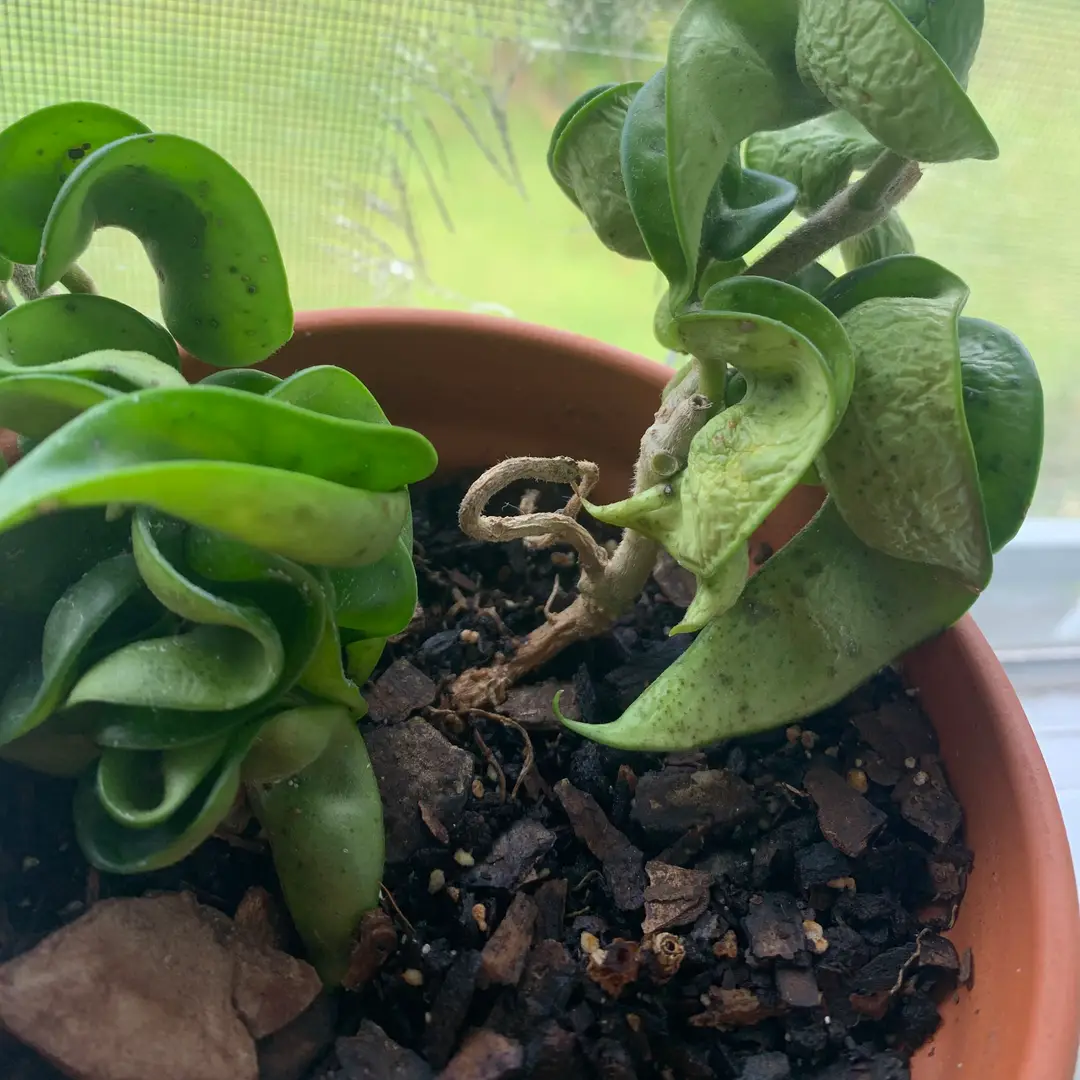Introduction
Wrinkled leaves on a Hoya plant can be a sign that the plant is experiencing some form of stress. Understanding the significance of hoya wrinkled leaves is crucial for diagnosing the underlying issue and ensuring the health of your plant. Here are the most common reasons why Hoya leaves wrinkles.
Reasons Behind Hoya Wrinkled Leaves
1. Underwatering
The most frequent cause of wrinkled leaves in Hoya plants is underwatering. Hoya plants, especially epiphytic varieties like Hoya Serpens, store moisture in their fleshy leaves. When they don’t receive enough water, they begin to lose turgor pressure, causing the leaves to wrinkle or shrivel. If you notice wrinkling, check the soil to see if it’s completely dry. If so, give your plant a thorough watering, ensuring the water drains well and the plant’s roots are adequately hydrated.
2. Overwatering and Root Rot
Interestingly, overwatering can also lead to wrinkled leaves, though the mechanism is different. Overwatered plants can develop root rot, a condition where the roots start to decay due to standing water or poor drainage. Once the roots are damaged, they can’t effectively absorb water and nutrients, causing the leaves to wrinkle as if they were dehydrated. To avoid this, always make sure your Hoya is in well-draining soil, and water only when the top couple of inches of soil are dry.
3. Low Humidity
Hoyas, especially tropical varieties like Hoya Serpens, thrive in humid environments. If the air around your plant is too dry, the leaves may lose moisture, leading to wrinkling. This is especially common in homes with air conditioning or during winter months when indoor heating reduces humidity. Increasing the humidity around your plant—either by misting it, using a humidity tray, or placing it in a naturally more humid area like a bathroom—can help restore the leaves to their plump, healthy appearance.
4. Temperature Stress
Hoya plants are sensitive to extreme temperatures, particularly cold drafts or hot, dry conditions. Exposure to cold temperatures can cause the leaves to wrinkle, shrivel, or even drop off. Make sure your plant is kept in a stable environment, away from sudden temperature changes, air vents, or drafty windows.
5. Nutrient Deficiencies
Though less common, wrinkled leaves can also be a sign of nutrient deficiencies. If your Hoya isn’t getting enough essential nutrients like potassium or magnesium, it may show signs of stress through its foliage. In such cases, using balanced, diluted fertilizer during the growing season can help address the deficiency.
6. Natural Aging
In some cases, wrinkling leaves could simply be part of the plant’s natural aging process. Older leaves might wrinkle and fall off as new growth emerges. If only the older leaves are wrinkling while the rest of the plant looks healthy, this is likely nothing to worry about.
How to Address Hoya Wrinkled Leaves: Solutions
Check Soil Moisture
Ensure that the plant is neither too dry nor too waterlogged. Adjust your watering schedule based on the plant’s needs.
Improve Humidity
If low humidity is the problem, raise the humidity levels by misting the plant or using a humidifier.
Check for Root Rot
If you suspect overwatering or root rot, gently remove the plant from its pot, check the roots for signs of decay (black, mushy roots), and repot it in fresh, well-draining soil.
Keep the Plant in a Stable Environment
Avoid placing the plant in areas with drastic temperature fluctuations or direct drafts.
| FAQs Signs of hoya wrinkled leaves? Wrinkled leaves on a Hoya plant can be a sign that the plant is experiencing some form of stress. Understanding the significance of hoya wrinkled leaves is crucial for diagnosing the underlying issue and ensuring the health of your plant. What are the marks on Hoya leaves? Marks on Hoya leaves can appear for a variety of reasons, ranging from natural processes to signs of environmental stress, pests, or disease. Identifying the type of marks and understanding their causes is crucial for diagnosing and treating your Hoya plant. How do you tell if a Hoya is overwatered? Overwatered plants can develop root rot, a condition where the roots start to decay due to standing water or poor drainage. Once the roots are damaged, they can’t effectively absorb water and nutrients, causing the leaves to wrinkle as if they were dehydrated. |
Conclusion
Wrinkled leaves on a Hoya plant are usually a sign that something is off in its care routine, whether it’s watering, humidity, temperature, or even nutrient balance. By addressing these factors and providing the right environment, you can help your Hoya plant recover and thrive with healthy, plump leaves.





